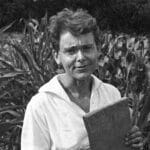Brace yourselves for a captivating tale about Isabella Gravitt, a woman shrouded in mystery. In this article, we’ll peel back the layers of her intriguing life, revealing secrets and surprises that have kept her story hidden. Get ready to dive into the unexpected journey of this enigmatic figure, where forgotten truths and mind-blowing narratives will leave you spellbound.
Surprising Facts About Isabella Gravitt
You know her as an actress, but Isabella Gravitt is so much more than what you see on screen. Let’s dive into some lesser-known facts that make her truly fascinating.
More Than Just a Pretty Face: A Woman of Many Talents
Sure, she lights up the screen, but Isabella’s talents go way beyond acting. She’s a woman of many passions, expressing herself through writing, music, and even philanthropy. This suggests a deep well of creativity and a desire to make a real difference in the world.
The Language Whiz: A True Citizen of the World
Hold onto your hats because this is impressive. Isabella is fluent in not one, not two, but five languages! She navigates English, Spanish, French, Italian, and German with ease. This global perspective likely stems from a thirst for knowledge and a deep appreciation for different cultures.
Action Hero in Real Life: The Black Belt Beauty
Don’t let her girl-next-door looks fool you. Isabella is a black belt in martial arts! This shows incredible discipline, focus, and physical strength. You definitely wouldn’t want to find yourself on the wrong side of a sparring match with her!
A Heart for Animals: Compassionate Advocate
Isabella’s love extends beyond humans to our furry friends. She’s a passionate advocate for animal rights, lending her voice and support to various animal charities. This compassion for animals speaks volumes about her character.
Tickling the Ivories: A Musical Prodigy
If acting and martial arts weren’t enough, Isabella is also a gifted musician. She captivates audiences with her piano skills, showcasing her versatility and artistic depth. Her dedication to the arts has even earned her prestigious awards, hinting at a bright future in the music world.
Wanderlust and Adventure: A Global Explorer
Isabella has an adventurous spirit, having traveled to over 30 countries! From exploring new cultures to scuba diving in exotic locations, she embraces life with a sense of wonder and a thirst for new experiences.
It’s clear that Isabella Gravitt is a multifaceted individual with a wide range of interests and talents. Her dedication to personal growth, her compassion for others, and her adventurous spirit make her a truly inspiring figure. We can’t wait to see what she accomplishes next!
What are some facts about Isabel in the book Refugee?
We’ve been talking about Isabel, the brave young girl from “Refugee,” right? Let’s dive a little deeper and uncover some interesting tidbits about her. While the book doesn’t hit us over the head with a ton of background info about her, there are clues sprinkled throughout that help us understand her character.
For one thing, it’s pretty clear that Isabel is incredibly resourceful and resilient. Think about it: she’s facing unimaginable challenges, having to flee her home and journey to a whole new country. But she doesn’t just crumble under pressure. Instead, she steps up, showing incredible strength and determination to protect her family. This suggests she’s probably had to be independent and responsible from a young age, facing whatever life throws at her head-on.
We also get glimpses of Isabel’s compassionate nature. Remember how she interacts with the other refugees they meet along the way? She’s always willing to lend a helping hand, even when she’s dealing with her own struggles. This hints at a deep well of empathy within her, a sign of someone who genuinely cares about others.
Key Points About Isabel Fernandez:
- Line 1: Isabel Fernandez, an 11-year-old Cuban girl, is a central protagonist in Alan Gratz’s “Refugee,” grappling with cultural identity and family responsibilities amidst societal upheaval.
- Line 2: Her deep connection to Cuban heritage manifests through her love for salsa music and trumpet playing, despite struggling to master the elusive clave rhythm.
- Line 3: As a resilient and resourceful young woman, Isabel assumes a prominent role in orchestrating her family’s perilous journey to escape Cuba, sacrificing her own desires for their safety.
- Line 4: By the novel’s end, she establishes a renewed connection to her heritage through a new trumpet and finally comprehends the clave, proving that displacement cannot diminish her cultural ties.
It’s important to note that what we learn about Isabel is often revealed through her actions and interactions, rather than lengthy descriptions. This makes her character feel even more real and relatable – she’s not just a list of traits, but a complex individual responding to extraordinary circumstances.
What are some fun facts about Isabel Toledo?
We’ve already talked about how amazing Isabel Toledo was as a designer, but did you know there’s a whole other side to her story? Let’s dive into some fun facts that make her even cooler!
One thing that made Isabel so special was her love for trying new things. Forget the usual fabrics – she was all about experimenting! Imagine using materials you wouldn’t expect, like, maybe even something you’d find in your recycling bin! This out-of-the-box thinking is probably why her designs looked like nothing else out there – they were like walking sculptures!
And speaking of sculptures, did you know Isabel’s designs have been featured in museums? Not just any museums, but places like the Metropolitan Museum of Art! That’s like the holy grail for artists and designers. It just goes to show how her work went beyond fashion and into the world of fine art.
Key Lines About Isabel Toledo:
- Isabel Toledo, a Cuban-American fashion designer, rose to prominence for her exceptional craftsmanship and minimalist elegance.
- Toledo’s independent spirit and unconventional approach to design set her apart as a true innovator.
- Her collaborations with iconic figures, including Michelle Obama and Anne Klein, showcased her talent to a broader audience.
- Toledo’s designs transcended fashion, embodying artistic expression and challenging industry norms.
But here’s the thing about Isabel – she wasn’t all about the spotlight. Even though she dressed famous people, including a certain First Lady we all know (Michelle Obama!), she was known for being down-to-earth and letting her work speak for itself.
There’s so much more to discover about Isabel Toledo, and the best part is, new information about her life and career might still be uncovered! So, if you’re curious, don’t hesitate to do a little digging yourself! You might be surprised by what you find.
What are some fun facts about Isabel Wilkerson?
So, we’ve been talking about Isabel Wilkerson, this amazing author and journalist, right? Well, buckle up because there’s so much more to discover about her! Did you know she made history as the first African-American woman to win a Pulitzer Prize for journalism? That’s a seriously big deal!
And get this, she’s written these two incredible books, “The Warmth of Other Suns” and “Caste.” They’re not just good; they’re game-changers! These books really dive deep into the whole messy history of race and people moving around in America. Critics loved them, and honestly, you probably will too.
Key Lines About Isabel Wilkerson:
- Isabel Wilkerson’s journalistic prowess led her to become the first African-American woman to win a Pulitzer Prize in journalism, paving the way for diverse voices in the field.
- Wilkerson’s impactful books, “The Warmth of Other Suns” and “Caste,” explore the complex history of race and migration in America, shedding light on the challenges and triumphs of marginalized communities.
- Wilkerson’s in-depth research and personal connection to her subjects bring authenticity and empathy to her narratives, resonating deeply with readers.
- Her work has garnered critical acclaim, with awards such as the National Book Critics Circle Award and Anisfield-Wolf Book Award, solidifying her status as a leading voice in contemporary literature.
What makes Wilkerson’s writing so special? It’s like she has this superpower to tell real people’s stories with so much heart and honesty. She gives a voice to those who often get overlooked, and it’s powerful stuff.
Oh, and she’s not just writing amazing books; she’s also shaping young minds as a professor at Emory University. She’s all about encouraging the next generation of journalists and writers, especially those from diverse backgrounds. Talk about an inspiring role model!
What is Isabel’s story about?
Picking up where we left off, remember how much Isabel cherishes her family and their life in Cuba? Well, imagine her world turning upside down. The political climate in Cuba becomes increasingly tense, making life unsafe for Isabel and her loved ones. Faced with danger and fearing for their future, they make the incredibly difficult decision to flee their homeland in search of a better life.
Think about how scary that must be – leaving everything you know behind to journey into the unknown. This is where Isabel’s incredible strength and resilience truly shine. She’s not just worried about herself, but also about the well-being of her family, especially her younger brother. Throughout their harrowing escape, she becomes their rock, caring for them and keeping their spirits high despite the perilous circumstances.
Key Lines About Isabel from “Refugee”:
- Isabel’s story depicts her resilience and determination in escaping Cuba’s oppressive regime and economic crisis to seek a better life in the United States.
- Isabel’s responsibilities, including caring for her family and managing household affairs, showcase her maturity and resourcefulness amidst adversity.
- The construction of a boat by her neighbors symbolizes hope and the pursuit of freedom, despite the dangers of leaving Cuba illegally.
- Isabel’s musical talent and the significance of “clave” in her culture reflect her deep connection to Cuba while highlighting the challenges of acculturation in a new country.
One of the most powerful parts of Isabel’s story is the sense of community. Her neighbors, all yearning for freedom and a brighter future, come together to build a makeshift boat. Just imagine the determination and hope woven into every fiber of that vessel! It represents their collective dream of escaping oppression and finding a safe haven.
Now, while Isabel deeply loves her Cuban heritage, especially its vibrant music, she also faces challenges when she arrives in a new country. The story beautifully portrays her journey of acculturation – how she strives to embrace her new surroundings while keeping her Cuban identity alive.
Remember those lively rhythms of the clave that filled her days back home? She finds it hard to connect with them at first, highlighting the emotional complexities of adapting to a new culture. This part of her story suggests how our environment can impact our connection to our cultural roots and the delicate balance we navigate when embracing new traditions.
Isabel’s story is about courage, love, and the enduring strength of the human spirit. It reminds us that even in the face of adversity, there is always hope, and that the bonds of family and community can help us overcome even the most difficult challenges.
What Did Isabel’s Father Throw at the Police?
So, things were already intense in Cuba with all the protests and the police cracking down. Isabel’s dad, caught up in the chaos, tossed a bottle towards the police line. It was a desperate act, probably fueled by frustration and anger at how they were being treated. This act, unfortunately, drew even more attention to him, and the situation quickly escalated. Isabel, seeing her father in danger, didn’t hesitate for a second. She jumped right in to protect him from the police, showing incredible bravery in the face of a scary situation.
Key Lines About the Incident with Isabel’s Father:
- Isabel’s father, Geraldo, retaliated against police suppression by hurling a bottle at a line of officers.
- Isabel’s courageous intervention saved her father from police brutality, demonstrating her protective instincts.
- The incident intensified the need for the family’s escape from Cuba, underscoring the urgency of their situation.
- The incident highlights the oppressive atmosphere in Cuba, where dissent was met with force.
This whole ordeal really solidified their need to leave Cuba. It wasn’t just about finding a better life anymore; it was about getting out before something worse happened. This incident paints a clear picture of how oppressive things were in Cuba at the time. People were being silenced and met with violence for simply speaking their minds. It was a dangerous place to be, especially for those who dared to challenge the status quo.
What symbolizes Isabel in Refugee?
We’ve been talking about the tough stuff Isabel goes through in “Refugee,” and it makes you think about how we cling to things that remind us who we are when times get hard. For Isabel, her Cuban heritage is a big part of her identity, and a few key things in the story really highlight that connection.
Think about Isabel’s trumpet. Music, especially salsa, is like the heartbeat of Cuban culture. Isabel’s love for her trumpet isn’t just about the music itself; it’s about holding onto that piece of her Cuban soul. But here’s the interesting part – at first, she struggles to feel the “clave” rhythm, which is the backbone of salsa music. It’s almost as if, for a moment, she’s a little disconnected from her roots.
Then there’s the boat. This little vessel, painstakingly built by Isabel’s neighbors, embodies both hope and danger. It represents the risky journey they’re willing to take for a shot at a better life. We see this echoed in countless stories of refugees – the desperate measures people take to flee oppression and find safety.
Key Symbols Representing Isabel in “Refugee”:
- Isabel’s trumpet is a cherished embodiment of her Cuban identity, reflecting her musical passion and connection to her roots.
- The boat represents the desperate plight of Isabel and her family as they embark on a perilous journey to escape oppression in search of a better life.
- Isabel’s unwavering determination and maturity amidst adversity serve as a testament to her resilience and the importance of familial bonds.
- The trumpet’s repair and Isabel’s newfound ability to perceive the clave rhythm symbolize her enduring connection to her heritage despite displacement.
But let’s talk about Isabel’s spirit. Even though she’s so young, she faces her challenges with a maturity and strength that’s inspiring. You get the feeling that she’s drawing on the resilience of generations of Cubans who came before her. She doesn’t back down, even when things get incredibly tough.
And remember when Isabel receives a new trumpet as a gift in America? That’s a powerful moment. It’s like a symbol of her being able to reconnect with her heritage, to reclaim that part of herself that maybe felt a little lost in the chaos of displacement.
Finally, there’s the moment when Isabel starts to hear and feel the clave rhythm. It’s like everything clicks into place. She’s not just playing the music anymore; she’s feeling it in her core. This suggests a deepening connection to her Cuban roots, proving that even amidst the upheaval, those cultural ties can be incredibly strong.
These symbols, woven together, paint a vivid picture of Isabel’s journey. It’s a story about holding onto your identity, even when life tries to pull you away from it. It reminds us that cultural connections run deep and can be a source of strength during tough times.
Who was Isabel’s best friend in Refugee?
Picking up where we left off, let’s talk about the rock in Isabel’s world during her tumultuous journey in “Refugee” – her best friend, Iván Castillo. This isn’t just some casual friendship, though. Their connection runs deep, forged in the shared experience of leaving their beloved Havana and braving the unknown together. Throughout their perilous journey, Iván consistently proves himself to be a source of strength for Isabel, offering a shoulder to lean on when her hope dwindles and reminding her of the light that exists even in the darkest of times. He’s more than just a friend; he’s a lifeline.
Key Lines About Isabel and Iván’s Friendship:
- Isabel’s closest confidant in the novel “Refugee” is Iván Castillo, her neighbor and friend in Havana.
- Iván’s unwavering support and their shared experiences during their perilous journey shape Isabel’s growth and resilience.
- Despite facing tragedy and loss, Isabel and Iván’s friendship serves as an anchor amidst the turmoil of displacement.
- Iván’s untimely demise becomes a poignant reminder of the sacrifices and dangers faced by refugees seeking safety and freedom.
But their story isn’t just about friendship. It paints a raw and heartbreaking picture of the sacrifices refugees are often forced to make in their desperate search for safety and a brighter future. Iván’s story, in particular, takes a tragic turn, serving as a harsh reminder of the very real dangers faced by those fleeing their homelands. His experience sheds light on the heavy price many refugees pay for daring to dream of a better life.
While the book focuses on Isabel’s perspective, Iván’s presence is deeply intertwined with her journey. He’s not just a supporting character; he’s a vital part of the narrative that reminds us of the power of human connection in the face of adversity and the profound sacrifices made by those seeking refuge.
Think about it: What does Iván’s character tell us about the refugee experience? How does his relationship with Isabel highlight the importance of community and support in overcoming hardship?
These are just some of the questions “Refugee” encourages us to consider as we witness the unwavering bond between Isabel and Iván.
How Long is Isabel’s Journey in Refugee?
We’ve already talked about the dangers and desperation that pushed Isabel and her family to flee Cuba. Now, let’s talk about just how long they were at the mercy of the open sea. Based on the events described in Refugee, it seems like Isabel’s journey to Florida takes about four days.
Key Lines About Isabel’s Journey:
- Isabel’s journey in “Refugee” involves traveling between the Bahamas and Florida, taking approximately 4 days.
- Her journey spans 3 distinct locations: the Caribbean Sea, the Straits of Florida, and an immigration detention center.
- Throughout her 4-day voyage, Isabel faces various challenges, including rough seas, mechanical issues, and the relentless pursuit of the Cuban government.
- Despite the arduousness of her journey, Isabel’s determination and resilience shine through as she seeks a better future for herself and her family.
Think about it: they’re crammed onto a tiny, rickety boat with very little food or water. They face storms and engine troubles, forcing them to confront the very real possibility that they might not make it. Every hour on that boat must have felt like an eternity.
While the book doesn’t explicitly state the exact duration, using clues from the narrative, like the deteriorating conditions on the boat and the characters’ dwindling hope, we can guesstimate that their journey lasted around four grueling days.
Who Saved Josef’s Father?
We’re picking up the story mid-journey on the St. Louis, a ship packed with Jewish refugees desperate for safety from the horrors unfolding in Nazi Germany. Remember how tense things were, with everyone uncertain about their future? Well, right in the middle of all that fear and confusion, something incredible happened. It’s a story about courage and the kindness of a stranger that brought a glimmer of hope to a very dark situation.
Josef’s father, overwhelmed by despair after being turned away from Cuba, saw no way out. He decided to end his suffering by jumping overboard. Can you imagine the terror and hopelessness that must have driven him to that point? Thankfully, a Cuban policeman named Mariano Padron was on board the St. Louis, assigned to keep an eye on things.
Key Lines About the Rescue of Josef’s Father:
- Officer Mariano Padron, a Cuban policeman assigned to the St. Louis, courageously rescued Josef’s father from an attempted suicide by jumping into the sea.
- Padron’s heroic actions earned him the gratitude and recognition of the St. Louis passengers, who greeted him with a hero’s welcome when he returned to the ship.
- Josef’s father was struggling with deteriorating mental health after being refused entry into Cuba and was eventually sedated in a hospital, according to Officer Padron.
- Despite initial fears, Josef’s father survived the rescue and Padron provided updates on his condition to the family, offering a glimmer of hope amidst the challenges they faced.
Now, imagine this: Officer Padron sees Josef’s father go overboard, and without a second thought, he jumps right into the churning sea after him. This wasn’t part of his job description. He could have easily turned a blind eye, but instead, he risked his own life to save a stranger.
The passengers, witnessing this act of bravery, were stunned. Think about it – they were already feeling helpless and unwanted, and here was this man, putting his own life on the line for one of their own. The way Officer Padron hauled Josef’s father back to safety, battling the waves the entire time, turned him into an instant hero on that ship.
But the story doesn’t end there. In the aftermath of the rescue, Officer Padron made it a point to keep Josef and his family updated on their father’s condition. He made sure they knew their father was receiving care at a hospital. While everyone was worried sick, Padron’s updates offered a sliver of hope – a reason to cling to optimism even as the bigger picture remained uncertain.
What Officer Padron did that day went beyond just saving a life; it reminded everyone on board the St. Louis that even when things seem bleakest, there’s still good in the world. His actions transcended language barriers and cultural differences, showing the power of simple human compassion. Padron’s story is a powerful reminder that even in the face of immense suffering, acts of courage and kindness can shine through. It makes you wonder, in those desperate times, how many other unsung heroes like Officer Padron might have existed, offering hope and solace to those in need.
Dive into the fascinating world of Ernest Garcia III and uncover captivating facts about his life and achievements.
Explore the enigmatic life of Noa Argamani and discover intriguing facts that will shed light on her remarkable journey.
- Star Ring Trends: Etsy vs Amazon - March 28, 2025
- Boost Pollinator Habitats: Baby Blue Eyes Sustainable Farming Guide - March 28, 2025
- Protect Big Black Bears: Effective Conservation Strategies - March 28, 2025
















